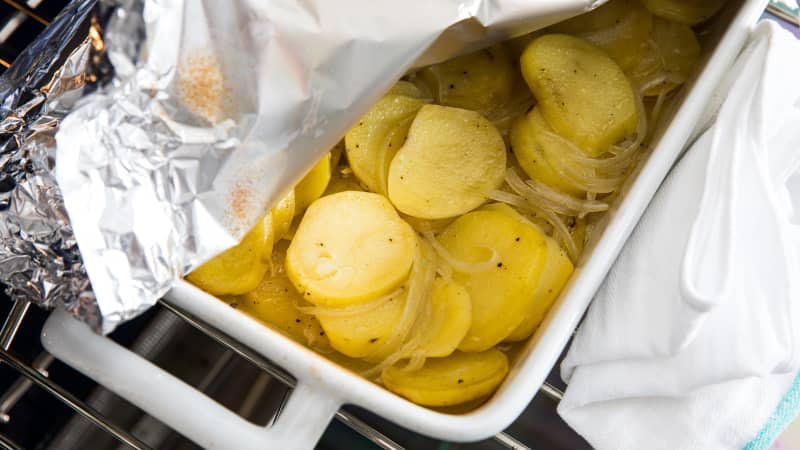My Goals and Discoveries
Even seasoning
We oil the potato slices first and then toss them with kosher salt and pepper to ensure that the seasonings are well distributed.
Creamy texture
Withholding the wine until the last stage of cooking prevents its acid from interfering with the softening of the potatoes.
Consistently blond, tender potatoes
Loosely covering the baking dish with foil allows moisture to evaporate but prevents the top from getting brown, leathery, and dry.




